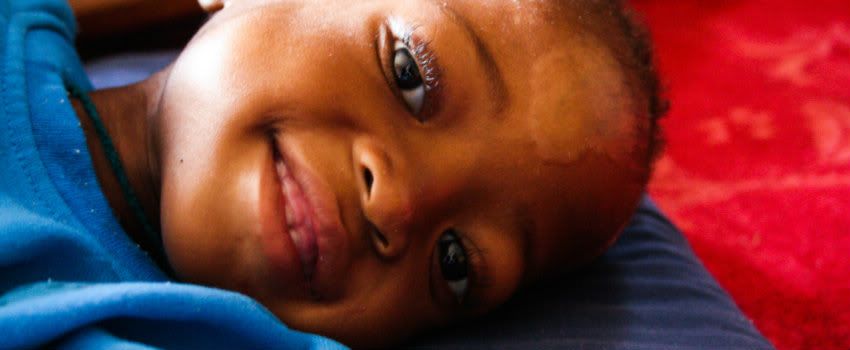At TTL, we spend a
lot of time focusing on the two crises we deal with on a daily basis: HIV/AIDS
and acute malnutrition. Yet another common illness that can severely impact
child health, particularly if they already suffer from one or both of the other
conditions, is Tuberculosis, or TB.
 Lesotho
has the fourth-highest TB infection rate in the world according to the World
Health Organization, in part because over 75% of the population lives in rural
and difficult-to-access areas. The steep mountains and harsh weather pose
significant challenges for Basotho trying to access basic health care services.
People can walk up to five hours over harsh terrain just to reach the nearest
medical facilities, and many patients only present to the hospital when their
physical condition has deteriorated to late stages of illness. In a country
that also has the third-highest HIV/AIDS infection rate worldwide, the struggle
to access critical health care can have a very high cost.
Lesotho
has the fourth-highest TB infection rate in the world according to the World
Health Organization, in part because over 75% of the population lives in rural
and difficult-to-access areas. The steep mountains and harsh weather pose
significant challenges for Basotho trying to access basic health care services.
People can walk up to five hours over harsh terrain just to reach the nearest
medical facilities, and many patients only present to the hospital when their
physical condition has deteriorated to late stages of illness. In a country
that also has the third-highest HIV/AIDS infection rate worldwide, the struggle
to access critical health care can have a very high cost.
TB in
Lesotho is associated with HIV and AIDS co-infection, difficulty with treatment
adherence, social and economic strain, limited access to treatment, and the
constant threat of resistance to TB medications. For people living with HIV/AIDS, their compromised immune
systems make them increasingly susceptible to the effects of TB.
Government hospitals
and numerous other organizations work hard to manage the high numbers of TB
clients, but the scarcity of space, human resources, and supplies makes
providing care an ongoing challenge.
Hospitals and clinics
are not alone in this struggle - TTL also faces difficulties with infection control
and maintaining the health of each child who comes into our care, especially at
the Safe Home. We work with vulnerable children under five who battle acute malnutrition,
HIV, overcrowding, and poverty, all of which are closely associated with TB and
lower treatment success rates.
The World Health
Organization reports that
childhood malnutrition puts kids at greater risk for TB and exacerbates the
severity of TB if it is contracted. High numbers of childhood TB are especially
frustrating when you consider that most TB deaths and adverse effects are
preventable with proper health care services for diagnosis and quick initiation
on treatment. A
lack of knowledge about infection control and when to seek medical attention is
likely a contributing factor to children being exposed to other TB-positive
individuals in the family and community.
The issues of space
and infection control are very salient for TTL. We want to provide care for
malnourished children when they are referred to the Safe Home, but do not want
to expose them to a child who may be TB-positive. TTL works directly with clinics,
such as the Baylor College of Medicine Children’s Clinic in Mokhotlong, to
ensure that vulnerable children under-five receive prompt medical attention
when presenting symptoms of respiratory illness. TTL also works closely with
the Mokhotlong Government Hospital, often
moving children to and from each service when it’s most appropriate. The hospital has both a pediatric ward and a
designated TB ward, but the ongoing patient demands often result in
overcrowding and difficulty implementing proper infection control procedures.
While we rely on our
partners at the Baylor Clinic and Mokhotlong Hospital for testing and
treatment, test results are rarely immediate and the child remains in need of
treatment for malnourishment. Not wanting to turn children away from receiving
care, TTL strives to adhere to good infection control practices in a
resource-strained environment. We are committed to developing and strengthening
our infection control policies and practices through the support of our local
and international partners. Improving our TB infection control strategies will
help ensure that we provide the best level of care possible for each tiny life.



No comments:
Post a Comment